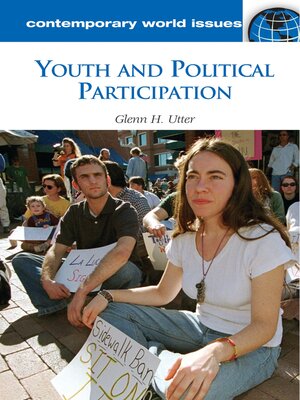Youth and Political Participation
ebook ∣ A Reference Handbook · Contemporary World Issues
By Glenn H. Utter

Sign up to save your library
With an OverDrive account, you can save your favorite libraries for at-a-glance information about availability. Find out more about OverDrive accounts.
Find this title in Libby, the library reading app by OverDrive.



Search for a digital library with this title
Title found at these libraries:
| Library Name | Distance |
|---|---|
| Loading... |
This comprehensive reference examines the history and importance of youth participation in politics, suggests reasons for their disengagement, and discusses efforts to increase the interest of young voters in the political process—a process in which they could be a controlling factor.
Surveys indicate that those under the age of 30 consistently score the lowest on factual questions about politics, and young people are the least likely to engage in political activity online despite being the age group most likely to use the Internet. Many political researchers and activists are justifiably concerned, linking the low level of political participation among American youth to the overall health of our democratic system.
Youth and Political Participation: A Reference Handbook sheds light on this important subject, identifying and discussing factors that have influenced youth political participation in the past and those that play a role today, including the mass media, political parties, interest groups, and individual attitudes toward political engagement. The book also provides historical perspective by addressing the early years of the Republic, the protest politics of the 1960s, the campaign for the 18-year-old vote, and the results of the 26th Amendment granting that right.
Surveys indicate that those under the age of 30 consistently score the lowest on factual questions about politics, and young people are the least likely to engage in political activity online despite being the age group most likely to use the Internet. Many political researchers and activists are justifiably concerned, linking the low level of political participation among American youth to the overall health of our democratic system.
Youth and Political Participation: A Reference Handbook sheds light on this important subject, identifying and discussing factors that have influenced youth political participation in the past and those that play a role today, including the mass media, political parties, interest groups, and individual attitudes toward political engagement. The book also provides historical perspective by addressing the early years of the Republic, the protest politics of the 1960s, the campaign for the 18-year-old vote, and the results of the 26th Amendment granting that right.







